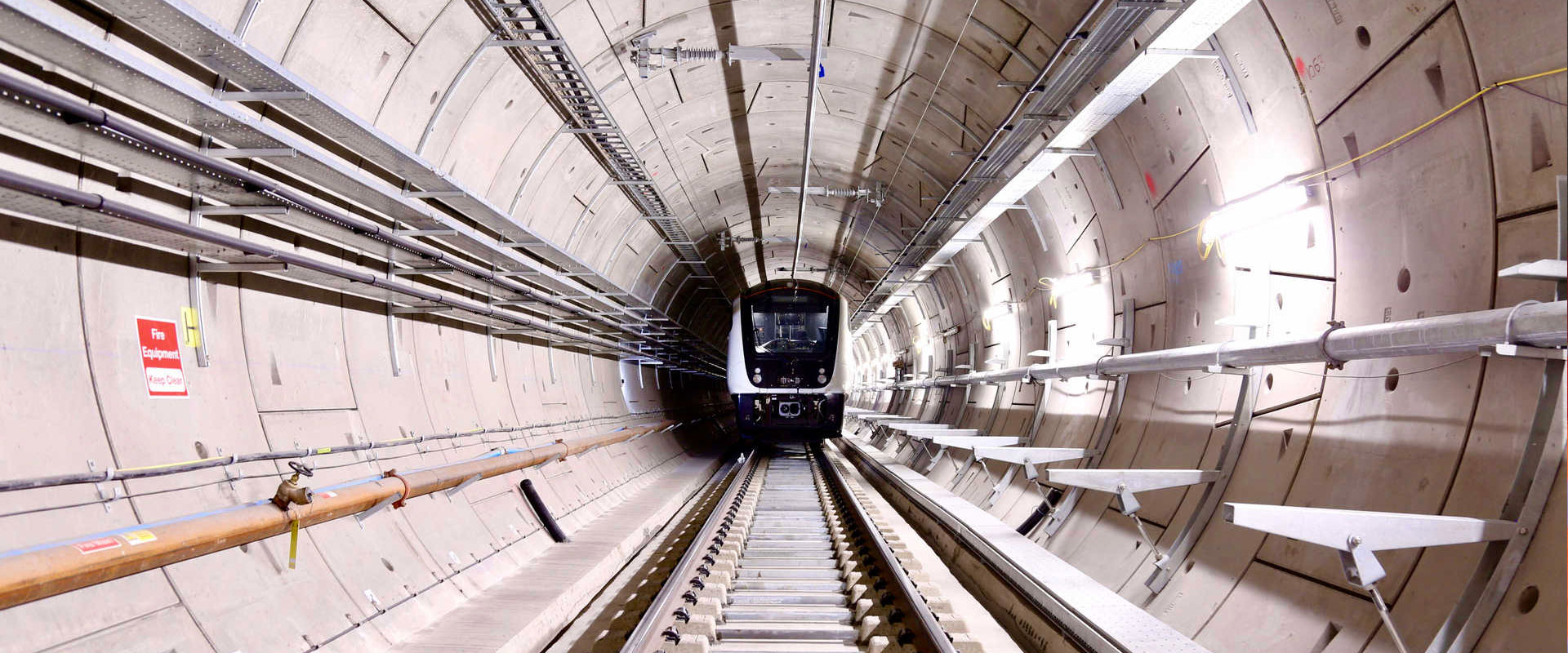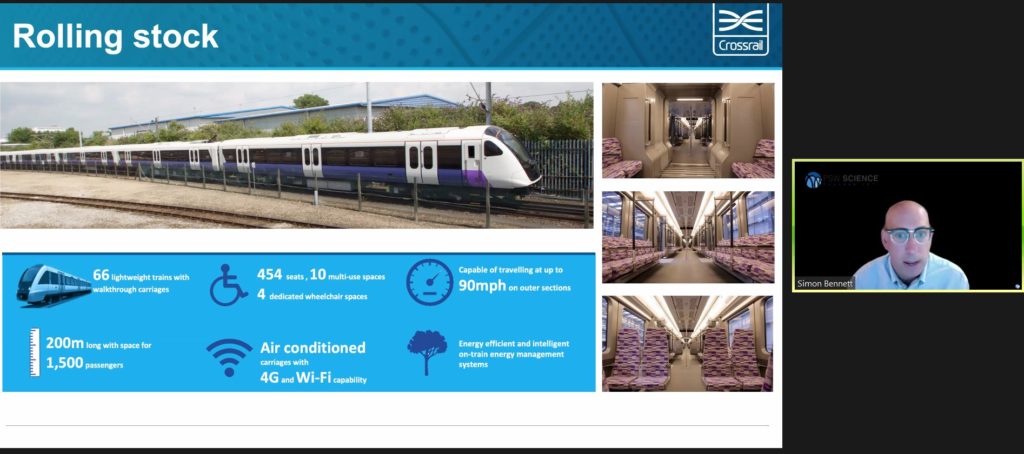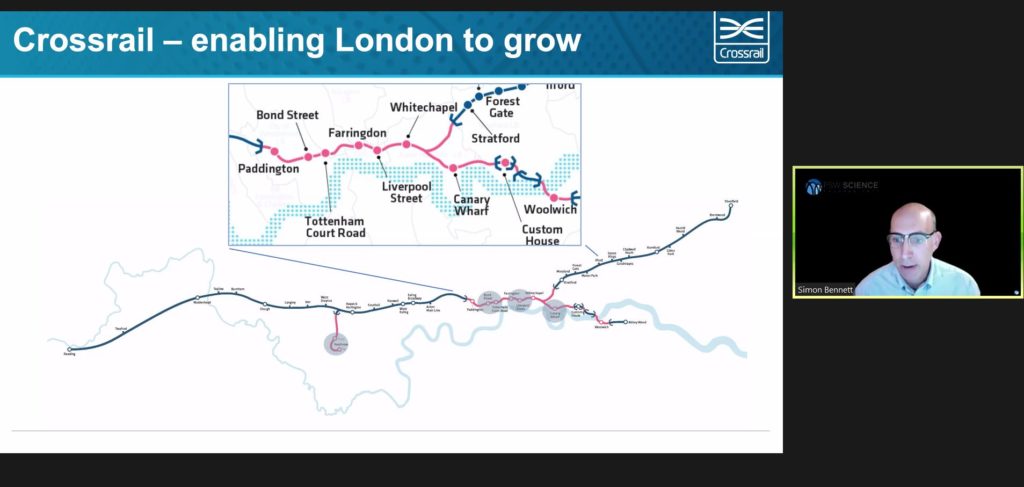“Crossrail” — Building the £15B Elizabeth Line
Digitally Digging a New Metro Beneath London's Skyscrapers
Simon Bennett & Daniel Irwin
Crossrail, Ltd
About the Lecture

Crossrail is a major project to link commuter rail services to the east and west of London through a new tunneled section under central London with 10 new stations providing interchange with the existing London Underground.
The construction and fit out of the railway have presented significant challenges due to the complexity of construction in an urban environment and of integrating rail systems on an unprecedented scale.
Crossrail set out to manage design and construction using digital building information management tools and has learned lessons of value to future projects of a similar scale and complexity.
References
(1) https://www.crossrail.co.uk/the-build/crossrail-the-build-main-construction
(2) https://learninglegacy.crossrail.co.uk/documents/execution-strategy-delivering-londons-elizabeth-line/
About the Speaker

Simon Bennett
Simon Bennet is Head of Learning Legacy at Crossrail. A Civil Engineer, Transport Planner and Communications professional, he worked on the original 1990s Crossrail scheme for the London Underground. In 2000 was seconded from the Transport for London organization to Cross London Rail Links to work on developing the project and securing powers for the undertaking. He led the Consultation team which became the Petitions Negotiation team during the Bill process. During the construction phase he has been Head of Stakeholder Engagement and then Programme Community Relations Manager.
In 2015, Simon was appointed to lead the team responsible for the collation and dissemination of good practice, innovation and lessons learned from the Crossrail construction programme aimed at raising the bar in industry.
Daniel Irwin
Daniel Irwin is the Geospatial Lead at Crossrail, a £15B railway construction project in London and one the largest infrastructure projects in Europe. With over 20 years of experience, including a Master’s degree in Geographical Information Systems, he has worked as a geospatial subject matter expert in sectors ranging from environmental, utilities, transport modelling and construction through to asset and facilities management. At Crossrail Daniel is leading the development of geospatial solutions to integrate and support the Building Information Management principles that underpin the project for the entire lifecycle of a world class railway.
Daniel has published and co-authored a number of articles, including 3 learning legacy papers, 1 white paper and 1 PhD Research Project. He has presented in numerous settings including for the Association for Geographic Information, ESRI and Bentley Conferences, as well as at the University of Stuttgart and University College London.
Minutes
On April 23, 2021, by Zoom webinar broadcast on the PSW Science YouTube channel, President Larry Millstein called the 2,439th meeting of the Society to order at 8:03 p.m. EDT. He welcomed new members, and the Recording Secretary read the minutes of the previous meeting.
President Millstein then introduced the two speakers for the evening, Simon Bennett and Daniel Irwin from Crossrail, Ltd. Bennett is Head of Learning Legacy and Irwin is the Geospatial Lead. Their lecture was titled, “Crossrail – Building the £15 Billion Elizabeth Line: Digitally Digging a New Metro Beneath London’s Skyscrapers.”
Bennett began the presentation by introducing Crossrail, the project to build the Elizabeth Line, a new 42 km railway under the center of London. The line will connect the existing surface railways to the East and West of the city.
Built in 1863, the Metropolitan Line was the first underground rail in London. In 1988, England opened its first national railway. Planning for Crossrail began the next year. Following decades of study and parliamentary approval, construction began in 2009.
The purpose of the new line is to relieve crowding on the existing underground, and to decrease journey times through the city. Crossrail is now Europe’s largest construction project; it involves: massive underground spaces; 50 km of track; and wide, 250 m long platforms. Once completed, the route will be known as the Elizabeth Line.
Crossrail uses two methods of tunnel construction. Platform tunnels are created by a sprayed concrete lining method and construction of a platform structure. Running tunnels are created by a boring machine that erects concrete rings as it goes.
Irwin then described the project’s building information modeling. Crossrail’s biggest challenges have included navigating London’s underground infrastructure. For the project’s tunnels to “thread the eye of the needle,” Crossrail required extremely accurate modeling. Using London’s survey grid, Irwin said Crossrail was able to achieve an approximately 5 mm margin of error.
Crossrail maintains a common data environment comprised of three primary data sets that will be used to run the completed infrastructure: graphical models, non-graphical data, and an electronic document management system. The graphical models include more than 4 million design files, built around computer assisted design (CAD) standards that allow them to be easily overlaid. Irwin then showed three and four dimensional project models and described their technical details.
Crossrail has compiled non-graphical information on approximately 600,000 assets as the project has progressed. The asset information management system (AIMS) is inside the document management system, allowing engineers to relate assets to documents. Crossrail began using the uniclass standard, but eventually moved to Asset Data Dictionary Definition Documents (AD4). Irwin then described how the AIMS categorized information and streamlined project maintenance.
Crossrail used Enterprise Bridge software to manage approximately 6 million documents. The software additionally managed contracts, asset breakdown structure, and other workflows. The Master Data Model was created in-house midway through the project to control naming and codification among different systems, link graphical models and non-graphical data, and model data integration.
Irwin then addressed the benefits and lessons learned from creating the common data environment. He said it gave engineers design visibility before construction began, detected clashes between models, and ensured that the work of disparate teams did not adversely impact one another.
The common data environment also allowed for innovations such as Bluetooth low energy beacons, augmented reality, virtual reality, on-site document verification, virtual information structures, SMART Boards with collaborative model use, and mobile GIS. Realized benefits included improved construction safety, improved data quality, and easier access to data.
Bennett then returned to the screen. He attributed the project’s delays to ensuring the interoperability of the railway’s systems, and ensuring that floating slab tracks are properly installed to reduce vibrating surface structures. Crossrail is running a new signaling system that also needs to be synced to the existing systems in the railways that it will connect. Train cars are being constructed with a full-length walkway and air conditioning. These new trains are long than existing tube trains, and require stations across the network to be lengthened.
The project is now in the commissioning and handover phase. Two stations, Custom House and Farringdon, have already been handed over to TfL Rail as station operator and railway service has begun. All but one of the remaining stations will be handed over by the end of this year. The railway’s central section will open in 2022, and will be fully opened by early 2023.
Bennett said Crossrail created a less than expected environmental impact and preserved archaeological sites. He is now working on the Learning Legacy, to educate successor projects on Crossrail’s lessons learned.
The speakers then answered questions from the online viewing audience. After the question and answer period, President Millstein thanked the speaker, made the usual housekeeping announcements, and invited guests to join the Society. President Millstein adjourned the meeting at 9:57 p.m.
Temperature in Washington, D.C.: 16° C
Weather: Clear
Concurrent Viewers of the Zoom and YouTube live stream, 85 and views on the PSW Science YouTube and Vimeo channels: 259.
Respectfully submitted,
James Heelan, Recording Secretary



